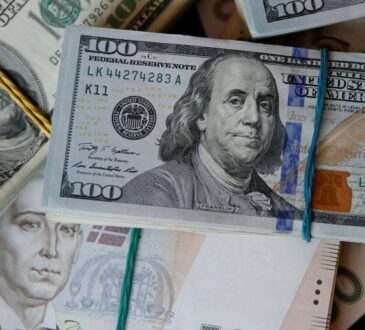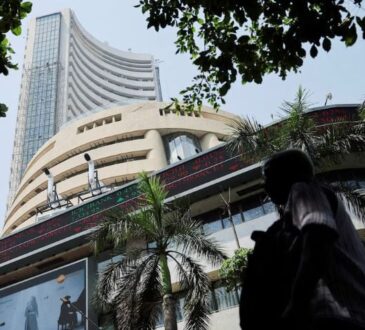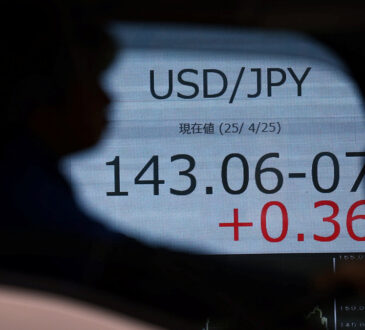
Market expert Sugandha Sachdeva attributes this resilience to the sustained inflow of foreign funds, positive fundamentals of the domestic economy and ebbing of inflationary pressures. She, however, notes that the dollar index rebounded, and strong demand for the greenback steered the rupee towards record lows.
“Geopolitical tensions amid the conflict between Israel and Hamas favoured the safety of the greenback, while a seasonal increase in import demand during the festive season posed a substantial headwind for the rupee,” Sachdeva said.
During the first half of 2023, the rupee traded within a broad range of 81.60-83.05. “The RBI was observed accumulating reserves near the bottom of the range and absorbing flows. Simultaneously, when the rupee was depreciating towards 82.80-83 levels, the RBI intervened to curb the sudden fall,” explains Amit Pabari of CR Forex.
Global factors like the banking crisis in March, and the Fed rate hike impacted the currency. However, Pabari, says despite these, the rupee’s momentum remained relatively stable. “But due to narrowing the interest rate gap, premiums fell to nearly a 12-year low,” he adds.
The dollar index — which measures the value of the greenback against a basket of six peers — moved in the range of 99 to 108 in the year, and has fallen 2.7% in one year. The value of the US dollar against a basket of six peers is inversely proportional to the value of the rupee. That is, if the value of the greenback rises, the value of the rupee depreciates and vice versa.
Domestically, the inflation briefly exceeded the Reserve Bank of India’s range but was swiftly curbed within a couple of months, reaching multi-month lows. Both the manufacturing and services PMIs outperformed global PMIs.
Outlook for 2024
Geopolitical risks are expected to continue influencing the trajectory of emerging market currencies, including the Indian rupee, says Sachdeva. However, she notes that the overall trend for the rupee will be closely tied to the US policy rate. “A significant cushion for the rupee is the expectation that the US central bank will commence interest rate cuts by mid-2024, potentially leading to a substantial weakening of the dollar.”
Pabari projects the DXY, currently trading near 104, to likely decline towards 100 and below in 2024. “A decrease in the dollar’s value could positively affect the rupee, and we anticipate that this trend will likely manifest in the local currency next year,” he says.
According to Sachdeva, overseas investors may increase their exposure to India, driven by strong macroeconomic fundamentals and the projection as one of the fastest-growing economies of 2024. “Central bank interventions would also play a crucial role in limiting volatility in the currency,” she says.
Another factor that is going to affect the Indian currency is the general elections scheduled next year. Pabari notes that historically, general elections in India, have triggered significant inflows.
| Particulars | 2014 | 2019 |
| FIIs flows Jan to May | $15.53 billion | $11.98 billion |
| Rupee levels in Jan | 68.32 | 71.53 |
| Rupee levels in May | 58.26 | 68.3 |
| Change (App) | 10.06 | 3.23 |
“Recent state election outcomes, indicating victories for the Bhartiya Janta Pary in three major states, have raised expectations for the party’s potential third consecutive win in the general election. Such an outcome might attract flows, mitigating policy shift risks and potentially bolstering the rupee,” he says.
“Domestic fundamentals seem robust, and the expectation of a global rate cut favours the rupee. Consequently, there is a higher likelihood that the rupee may not depreciate toward the 83.50-84 zone but instead appreciate toward 82.50-82 over the next 3-5 months. Furthermore, we believe that the currency is likely to continue trading in the same range throughout 2024,” Pabari concludes.
Sachdeva says the inclusion of Indian bonds in the JP Morgan bond index is projected to generate passive inflows of around $30 billion, starting June 2024, adding to the positive outlook for the Indian rupee. “The trend of crude oil prices, however, remains a wildcard, and any significant upside beyond $100 a barrel could negatively impact the exchange rate,” she notes.
Sachdeva adds that taking into consideration the positive and negative factors, a mild depreciation is projected for the domestic currency.” Any sustained move beyond the 83.50 mark could make it vulnerable to a slide toward the 84.80-85 mark. On the contrary, the 81.50 level remains a crucial barrier, and a potential move beyond it would bring in upside for the Indian rupee towards the 79 mark.”
(Edited by : Shoma Bhattacharjee)




